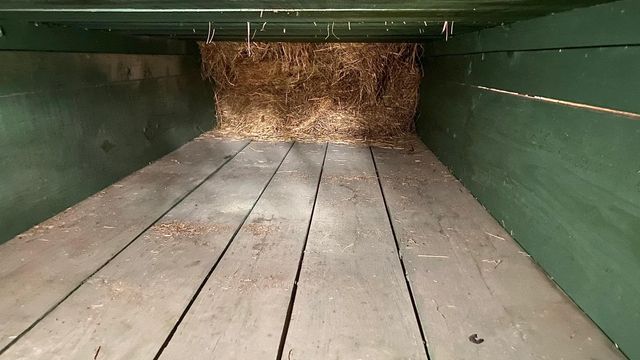False-bottom wagon: Look inside this 200-year-old hiding space for escaping slavery
Parked in the barn of an 1811 Quaker homestead, an old wagon might just look like any other historic artifact from the 1800s.
But one of these old wagons has a secret hidden within.
The Stanley Murrow false-bottom wagon is the only authenticated artifact from the Underground Railroad in North Carolina – and the entire South – according to the director of Mendenhall Homeplace, Shawn Rogers.

The top is full of hay and fragile North Carolina pottery -- but there's a hidden compartment underneath the 'false bottom,' where enslaved men and women could hide while making the dangerous run for freedom.
Visitors come from around the country just to see this piece of history. They can look inside the small, hidden space and imagine: Once, someone was hiding right here, holding their breath, hoping desperately not to be found.

Likely the only remaining vehicle used in the Underground Railroad in NC
According to a document called Precious Cargo, written by historian Cecil Hayworth, the wagon is likely the only remaining vehicle in NC that was used to transport men and women escaping slavery – and it's the wagon at Mendenhall Homestead in Jamestown.
"We are the interpretive center for 'the other South,'" said Rogers. "The South that actively opposed slavery and worked to promote universal education for all people."
Many stories related to the abolitionist movement and Underground Railroad happened in Guilford County, where there was ample support from local Quaker communities and communities of free Black families. Even 'Runaway Slave Ads' from the time period often acknowledge that Freedom Seekers may be hiding in these areas, which were known to harbor and hide them.
According to Rogers, boys as young 13 would drive the wagon up north to Ohio and Indiana. Two of the main drivers were Andrew Murrow and Isaac Stanley.

From the outside, it appears to be a normal wagon, carrying loads of hay to protect the fragile and valuable North Carolina pottery.
"If you drop the tailgate, all you see is pottery packed in straw. Really the only way you can see the hidden compartment is if you raise these two boards – and in most wagons these boards were nailed shut permanently, so most people didn't conceive of the fact that the boards could come up and out," he said.
The sight of a Quaker youth driving a cart of pottery was commonplace, and Rogers said no one really suspected they were secretly running people north.

There was, however, a large risk. Anyone caught trying to escape slavery could be killed. Anyone caught helping them could lose their property – and, in some cases, they were also killed.
"If they were to probe this straw with a stick, you would immediately be able to tell the cart bottom was too shallow," said Rogers. "And they would quickly have figured out what going on underneath."
Fortunately, the pottery itself helped protect against discovery. Even back then, pottery from North Carolina was highly-prized. Most people would avoid probing these carts for fear of cracking or breaking the fragile, valuable cargo.
"They were never caught," said Rogers.

Other potential hiding spaces at Mendenhall Homeplace
The Mendenhall Homeplace -- and Guilford County as a whole -- played an active role in the Underground Railroad. The 200-year-old site is open for tours during specific hours, which can be found on their website. You can also call ahead for a tour.
Many other remnants of the Underground Railroad can be found in the surrounding area. The 250-year-old Underground Railroad Tree is still growing in the old-growth forest where Freedom Seekers were known to hide.
A 200-year-old aqueduct and tunnel built using enslaved labor, then later used as part of the Underground Railroad, can be found in Halifax County.
Visitors can also tour Snow Camp, another Quaker community that was a stop on the Underground Railroad for many Freedom Seekers.














